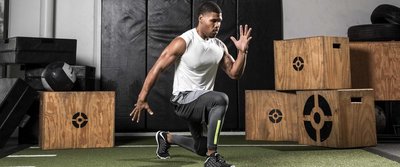Main Page | Get The PDF | Get Muscle | Get Strong | Get Ripped | Get Athletic
There's a big difference between "losing weight" and "getting ripped." One implies that you're not as fit as you want to be. The other makes it clear that you've simply been focusing on other goals for a while, and you're now making a strategic choice.
If you've been following the Get Strong and Get Muscle programs, then devoting a couple of months to leaning out is a no-brainer. In fact, we'd argue it's an essential part of making 2017 your ultimate year.
Here's another big difference between losing weight and shredding down: Successful shredding is all about optimizing your body's ability to burn fat while preserves your muscle-building gains.
Here's what you'll find in your next shredding program!
1. Focus on Free Weights and Big Movements
Whether you're burning off body fat or building mass, you should make multijoint exercises the foundation of your training. By engaging a greater number of muscle groups than single-joint movements, multijoint exercises allow you to lift far heavier loads, which raises your metabolism both during and after your workout.
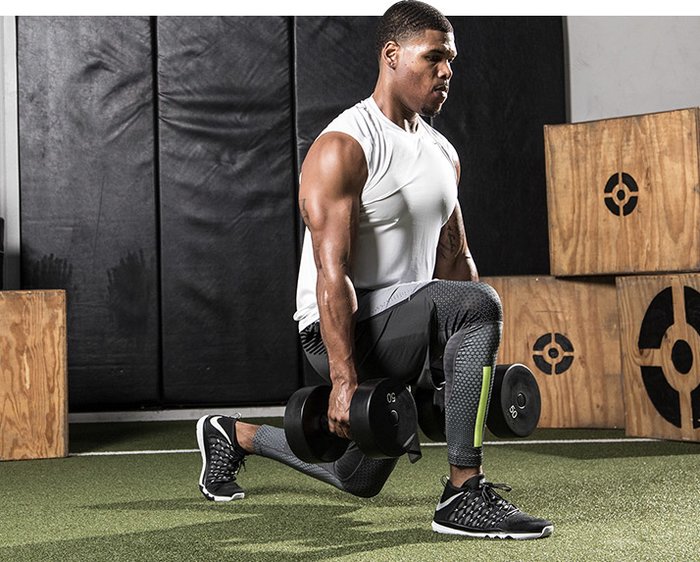
{{caption}}
These movements have also been shown to more effectively trigger the release of favorable anabolic hormones like testosterone and growth hormone, which burn fat and help you withstand a caloric deficit.
Don't worry, you'll still get to do some shoulders, arms, and hamstrings. You'll just have to do some heavy lifting first.
2. Use Heavier Weights
When trying to lean your physique, you might think it makes sense to reduce your normal weight loads to boost the reps through the ceiling. After all, if you're performing more reps, you're doing more work and burning more total calories during each workout, right?
The problem is that going lighter takes your foot off the muscle-building accelerator. When you use heavier weights, you're telling your body to build or retain muscle mass. Using lighter weight for higher reps, on the other hand, sends an endurance signal to your body that can make it difficult to keep all of your hard-earned muscle. So even though you want to get lean, you still need to use a moderately heavy training stimulus—at least for the first half of your workout.
Training with heavier weight (6RM) has been shown to help raise metabolism higher and for longer periods than using lighter weight loads.[1] This is related to a phenomenon called "excess post-exercise oxygen consumption," or EPOC, which causes your body to enter an elevated state of metabolism for as long as 24 hours after your workout. You hear plenty about EPOC in a cardio setting, but the stimulus of moving extra weight is a great way to get it, too.
3. Increase the Density of Your Workouts
You'll need to find ways to make your workouts shorter, but still highly efficient, particularly if you follow a lower-calorie diet during this phase. Rather than following your normal between-set recovery process for every movement, do some additional work during what would normally be downtime, at least on certain movements. In doing so, you increase the density of your workout.
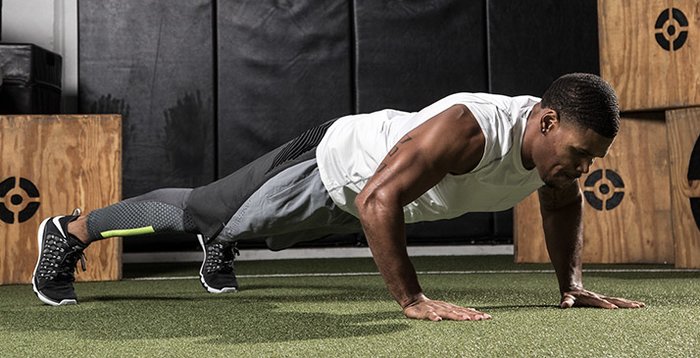
In the program, you'll find both regular supersets and "density supersets," where strength movements are paired with unweighted movements performed for time. An example is the seated overhead press paired with bodyweight lunges. You'll do the lunges for 45 seconds, rest 30, then knock out your next set of presses.
Don't be surprised if, at first, you challenge your cardio conditioning. You build that over time, just like you build muscle tissue.
4. Add Volume With Intensity Principles
Another way to do more work without extending the length of your workout is to make use of set-extending techniques like supersets, dropsets, and rest-pause sets. You'll do all three in this program.
Extending a set means that even when you hit muscle failure, you still don't put the weight down. Such techniques include rest-pause, dropsets, and supersets. By extending your sets, you make your muscles work harder with longer times under tension. This, in turn, elevates your heart rate and burns more total calories.
5. Add Brutal Finishers at the End of Your Big-Muscle Workouts
The ends of most workouts are geared toward generating a deep muscle pump with a single-joint move. But we're on a mission to get ripped, so we're going to double-down and use a multijoint move for your back and legs, but do it on a machine, where you can keep banging out quality reps long after you would have dropped a barbell.
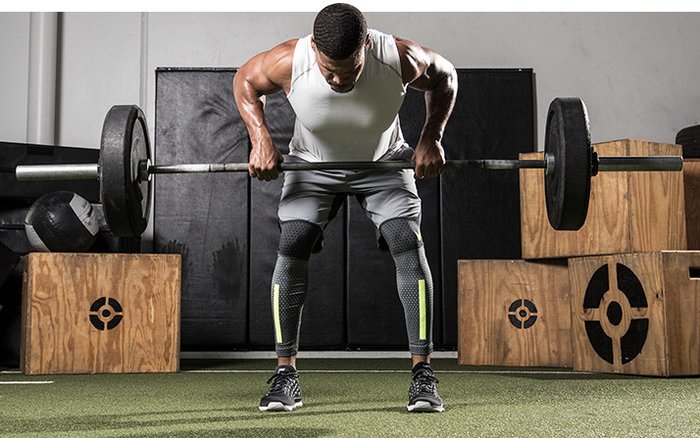
{{caption}}
With a weight you can handle for 10-12 reps, you'll complete 7 sets—each to failure, with the hitch being you'll take only about a 30-second rest between sets. If your reps fall off, simply reduce the weight.
No matter how much weight you use here, you'll get a crazy pump. And when you do, your muscles will become gorged with a number of metabolic byproducts that promote the release of anabolic hormones such as insulin-like growth factor (IGF-1), testosterone, and growth hormone to stimulate muscle protein synthesis.[2,3]
Remember what I was saying about EPOC earlier? That applies here, too. Research from the College of New Jersey (Ewing) has found that male subjects burned significantly more calories during their bench-press workouts by resting for just 30 seconds instead of a more typical 3 minutes between sets.[4] So while you'll still a couple of minutes' rest during the early parts of your workouts, you'll get far less elsewhere in the routine.
6. Do HIIT Cardio Intervals to Burn More Calories, Faster
Cardio is a necessary evil if you want to tip the scales toward burning more calories every day. But that doesn't mean you have to endure long, boring sessions on a bike or treadmill.
High-intensity interval training, or HIIT, is here to stay, for the simple reason that it works. A study published in the International Journal of Obesity compared young women who did steady-state cardio for 40 minutes to those who completed just 20 minutes of HIIT training. After doing the exercises three times a week for 15 weeks, members of the HIIT group lost a significantly greater amount of body weight and body fat compared to the steady-state group.[5]
Over a few short weeks, you'll increase your cardiorespiratory fitness and muscular strength, allowing you to increase both the duration of your intervals and the length of the HIIT session. Just remember this is not an endurance activity; focus on being able to do short, all-out bursts.
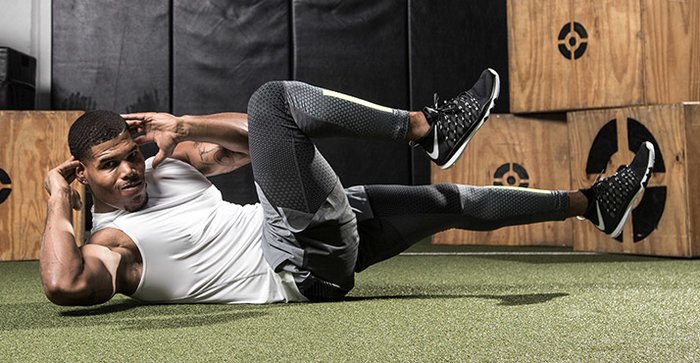
HIIT training, like your weight training, is highly intense and does take a toll on recovery. So don't use it for all four cardio sessions. Do two HIIT-style and two steady-state workouts for a total of about 40 minutes, tops. For protocol, I recommend building up to 20 minutes of 1 minute on, 1 minute off, as was explained in the Cellucor Summer Shred program.
Get Ripped: The Workouts
- This program is written to be performed three days on, one day off, and then repeated. But that's pretty intense. If your recovery or lifestyle can't keep up with it, customize the rest days as needed.
- The workouts below don't include warm-up sets. Do as many warm-up sets as you need, but never take them to muscle failure.
- Choose a weight that enables you to reach muscle failure by the target rep listed. Given the relatively short rest periods, you may have to adjust your loads downward based on fatigue.
- These are sample workouts for intermediate-to-advanced individuals. Adjust them based on your personal circumstances. You can decrease the volume and intensity to match your ability at the start. But strive to make improvements over time—more weight, more reps, etc. And remember that while this workout will increase your conditioning, your primary goal is to get leaner by increasing your metabolism.
- Do your steady-state cardio either at the end of your workouts or on an off day. The same applies to your HIIT work, except that it's not recommended to do HIIT right after a leg workout or within about 24 hours before it.

BodyFit
$6.99/month- 2,500+ expert-created single workouts
- 3,500+ how-to exercise videos
- Detailed workout instruction
- Step-by-step workout tips
- Training at gym or at home
- Access to Workout Plans
- Access to Bodyfit App
- Store Discounts
Already have a Bodybuilding.com account with BodyFit? Sign In

What comes with BodyFit?

- Instructional Videos
Don't risk doing a workout improperly! Avoid injury and keep your form in check with in-depth instructional videos.

- How-to Images
View our enormous library of workout photos and see exactly how each exercise should be done before you give it a shot.

- Step-by-Step Instructions
Quickly read through our step-by-step directions to ensure you're doing each workout correctly the first time, every time.
How to Progress This Program
This routine should do pretty well for a few weeks. However, if you want to turn this cycle into a full-blown 2- or 3-month phase, you'll need to make some changes to keep your workouts fresh and stimulating.
- Change the split and body-part pairings. The push-pull-legs split outlined here is by no means your only option. You can easily break up or combine portions of these workouts if you need more recovery time, want to focus on weak areas, or want to do more (or less) volume on specific muscle groups.
- Make smart exercise substitutions. The principles that inspire the program can work any number of ways. Swap barbells for dumbbells or vice versa, change the angles of your pulls and pushes—you name it, you can do it.
- Dial the intensity up or down. You could add rest to some of these workouts, or decrease them even further. You could do more dropsets, fewer, or just on different movements. You can even switch around bodyweight moves during your density training and, say, jump rope or do mountain climbers instead.
- Adjust rep targets for variety. I recommend keeping the initial exercise in each workout heavy so you can generate that higher-intensity anabolic stimulus. But after that, you can move your rep ranges into a wider, more flexible range. You can even adjust your rest-pause targets and RMs. Just don't get stuck in a rut. Keep it fresh!
Try to stick with the workout as written—or as close to it as your schedule will allow for at least 4-6 weeks before switching it up. Then, tweak it to make it your own. Give this program a couple of months, and you'll be ready for a change of pace in the form of one of the other Cellucor Ultimate Year programs!
Main Page | Get The PDF | Get Muscle | Get Strong | Get Ripped | Get Athletic
References
- Børsheim, E., & Bahr, R. (2003). Effect of exercise intensity, duration and mode on post-exercise oxygen consumption. Sports Medicine, 33(14), 1037-1060.
- Tesch, P. (1988). Skeletal muscle adaptations consequent to long-term heavy resistance exercise. Medicine and Science in Sports and Exercise, 20(5 Suppl), S132.
- Goto, K., Ishii, N., Kizuka, T., & Takamatsu, K.(2005). The impact of metabolic stress on hormonal responses and muscular adaptations. Medicine and Science in Sports and Exercise, 37(6), 955-63.
- Ratamess, N. A., Falvo, M. J., Mangine, G. T., Hoffman, J. R., Faigenbaum, A. D., & Kang, J. (2007). The effect of rest interval length on metabolic responses to the bench press exercise. European Journal of Applied Physiology, 100(1), 1-17.
- Trapp, E. G., Chisholm, D. J., Freund, J., & Boutcher, S. H. (2008). The effects of high-intensity intermittent exercise training on fat loss and fasting insulin levels of young women. International Journal of Obesity, 32(4), 684-691.


